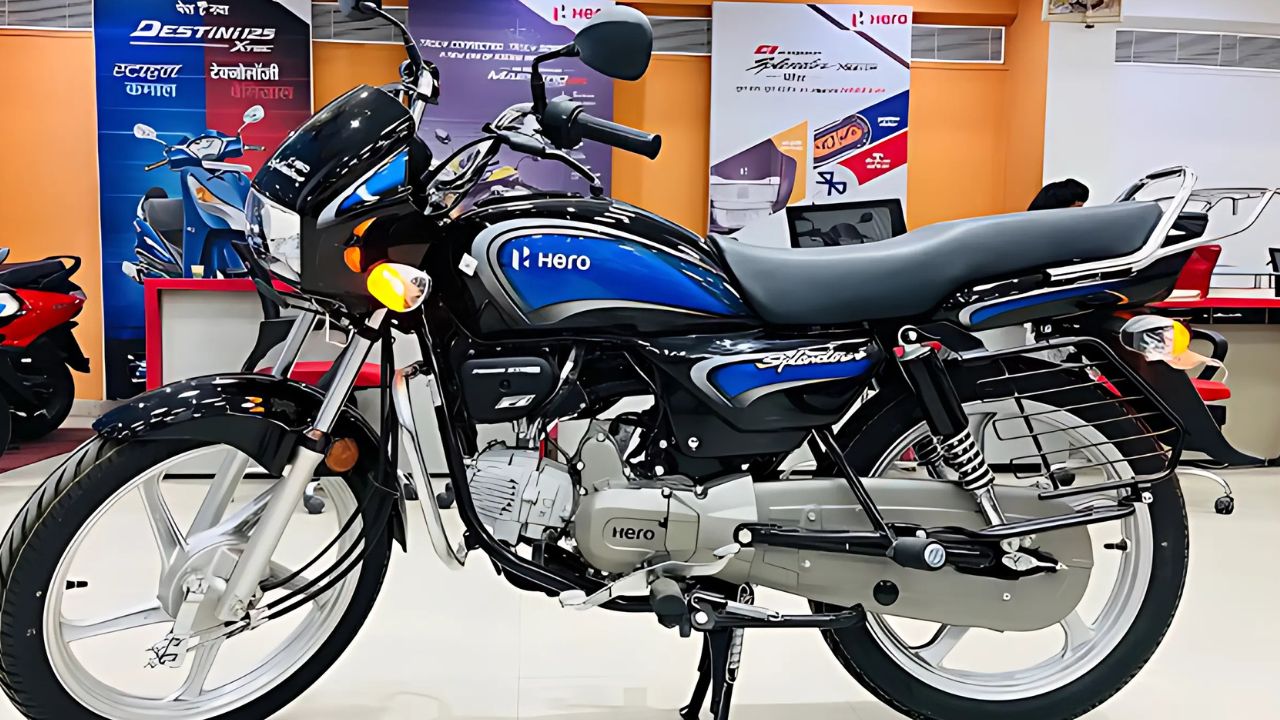In the vast landscape of India’s two-wheeler market, one name has stood the test of time and continues to dominate sales charts year after year – the Hero Splendor. Since its inception in 1994, the Splendor has become synonymous with reliability, fuel efficiency, and affordability, earning its place as the backbone of personal transportation for millions of Indians.
Key Specifications
Before delving into the Splendor’s impact and evolution, let’s take a look at the key specifications of the latest Hero Splendor Plus model:
| Feature | Specification |
|---|---|
| Engine | 97.2cc, Air-cooled, 4-stroke Single Cylinder OHC |
| Power | 8.02 PS @ 8000 rpm |
| Torque | 8.05 Nm @ 6000 rpm |
| Transmission | 4-Speed Constant Mesh |
| Fuel System | Programmed Fuel Injection |
| Front Suspension | Telescopic Hydraulic Shock Absorbers |
| Rear Suspension | 5-step Adjustable Hydraulic Shock Absorbers |
| Front Brake | 130 mm Drum Type |
| Rear Brake | 130 mm Drum Type |
| Tires (F/R) | 2.75 x 18 – 4 PR / 2.75 x 18 – 6 PR |
| Fuel Capacity | 9.8 liters |
| Kerb Weight | 112 kg |
| Mileage | 65-70 km/l (claimed) |
The Splendor Legacy
The Hero Splendor’s journey began in 1994 when Hero, in collaboration with Honda, introduced this commuter motorcycle to the Indian market. It quickly gained popularity due to its perfect blend of affordability, reliability, and fuel efficiency – three factors crucial for the average Indian consumer.
Over the years, the Splendor has undergone several iterations and improvements, but its core values have remained unchanged. It has consistently been one of the top-selling two-wheelers in India, often claiming the title of the world’s highest-selling motorcycle.
Design and Ergonomics
The Splendor’s design philosophy has always been about simplicity and functionality. While it has evolved over the years to incorporate modern elements, it has retained its classic, no-frills appearance that appeals to a wide range of consumers.
The upright riding position, comfortable seat, and well-placed handlebars make it ideal for daily commutes in busy Indian traffic. The lightweight nature of the bike (112 kg) ensures easy maneuverability, a crucial factor for navigating through congested urban areas.
Engine and Performance
At the heart of the Splendor Plus is a 97.2cc, air-cooled, 4-stroke single-cylinder engine. While the power output of 8.02 PS might seem modest, it’s perfectly suited for its intended purpose – efficient city commuting. The engine is known for its smoothness and refinement, providing a vibration-free ride even at higher speeds.
The 4-speed constant mesh transmission is simple and reliable, allowing for easy gear changes in stop-and-go traffic. The recent switch to programmed fuel injection has further improved the bike’s performance and fuel efficiency, ensuring it meets the latest emission norms.
Fuel Efficiency: The Splendor’s Crown Jewel
Perhaps the most celebrated aspect of the Splendor is its exceptional fuel efficiency. With a claimed mileage of 65-70 km/l, it continues to be one of the most fuel-efficient motorcycles in the market. This remarkable fuel economy has been a key factor in its enduring popularity, especially in a price-sensitive market like India where running costs are a significant consideration for buyers.
Reliability and Low Maintenance
The Splendor has built its reputation on being an incredibly reliable machine. It’s not uncommon to see decade-old Splendors still running smoothly on Indian roads. The simple engineering and robust build quality contribute to its longevity.
Moreover, the widespread availability of spare parts and a vast service network make maintenance both easy and affordable. This low cost of ownership has been crucial in making the Splendor a favorite among rural and semi-urban consumers.
Technology and Features
While the Splendor has always been about simplicity, recent models have incorporated modern features to keep up with changing consumer expectations. The latest Splendor Plus comes with:
- i3S Technology (Idle Start-Stop System) for improved fuel efficiency
- Integrated Braking System for enhanced safety
- Digital-Analog Instrument Cluster
- Alloy Wheels (in select variants)
- Mobile Charging Port (in select variants)
These additions have helped the Splendor stay relevant in an increasingly competitive market without compromising its core values.
Market Position and Competition
Despite facing stiff competition from newer entrants and evolving consumer preferences, the Splendor continues to dominate sales charts. Its primary competitors include the Bajaj Platina, TVS Star City Plus, and Honda CD 110 Dream.
The Splendor’s success has been so significant that it has spawned its own sub-brand within Hero MotoCorp, with variants like the Splendor iSmart and Splendor+ Black and Accent.
Cultural Impact
The Hero Splendor is more than just a motorcycle; it’s a cultural icon in India. It has been a symbol of upward mobility for many families, often being the first motorized vehicle in a household. Its presence in Indian movies, advertisements, and daily life has cemented its status as a national icon.
Future Outlook
As India moves towards electric mobility, Hero MotoCorp is preparing for the future while maintaining the Splendor’s relevance. The company has announced plans for electric two-wheelers, and it’s likely that we’ll see an electric version of the Splendor in the coming years.
However, given the vast rural market in India where charging infrastructure is still developing, the conventional Splendor is expected to continue its strong sales for years to come.
Conclusion
The Hero Splendor’s journey from a simple commuter bike to a cultural phenomenon is a testament to the power of understanding and catering to consumer needs. Its blend of affordability, reliability, and efficiency has made it a staple in Indian households for nearly three decades.
As the automotive industry undergoes rapid transformation, the Splendor stands as a reminder that sometimes, the simplest solutions are the most enduring. Whether it will continue its reign in the age of electric mobility remains to be seen, but its impact on India’s transportation landscape is undeniable and likely to be felt for generations to come.
